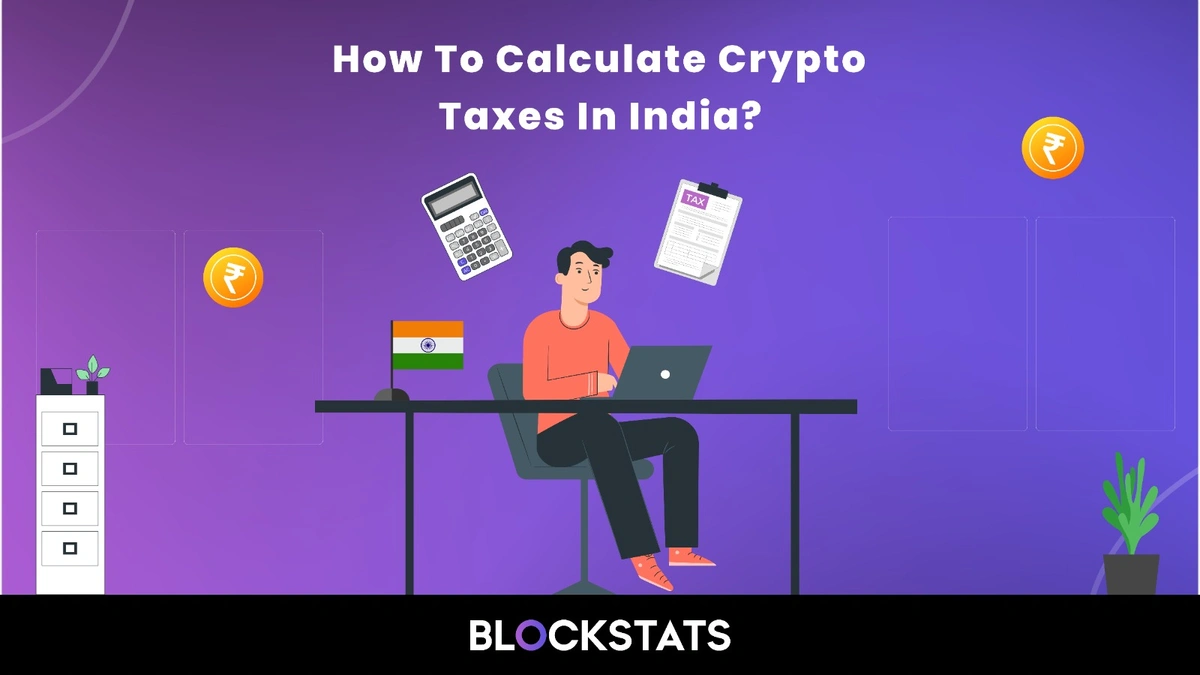How to Calculate Crypto Taxes in India: A Complete Guide (2025)
Over the past few years, cryptocurrency trading and investment have grown rapidly in India. However, with this growth, the government has introduced clear taxation rules to regulate and track these transactions. If you buy, sell, trade, or even receive cryptocurrency, you must pay taxes and report it in your Income Tax Return (ITR).
Many investors are still not sure how these taxes are calculated, how TDS works, and how to file the correct details. At Blockstats, our aim is to provide a step-by-step look at everything so you can confidently calculate your crypto tax.
Understanding How Crypto is Taxed in India
In India, all cryptocurrencies, NFTs, and similar tokens are referred to as Virtual Digital Assets (VDAs). The gains from the sale of these assets are subject to taxation under Section 115BBH of the Income Tax Act.
Here are the key rules:
-
Any profits you make from trading or selling cryptocurrency are subject to a flat 30% tax.
-
An additional 4% health and education cess is applied to the tax amount.
-
1% TDS (Tax Deducted at Source) is deducted by the exchange or buyer on transactions above ₹10,000.
-
You can only deduct the purchase cost when calculating profits.
-
Cryptocurrency losses are not transferable to subsequent years or offset against any other source of income.
Step-by-Step: How to Calculate Your Crypto Tax?
To understand how much tax you owe, follow these steps:
-
Identify all taxable transactions: Knowing what is taxable and non-taxable is important. Any time you sell crypto for INR, trade one cryptocurrency for another, or use crypto to pay for goods or services, it is a taxable event. It is not taxable to just keep cryptocurrency in your wallet.
-
Calculate the profit for each transaction: For each sale, subtract the cost of purchase (including any transaction fees) from the sale price:
Profit = Sale Price – Purchase Price
-
Apply the 30% tax rate: Once you know your total profit, calculate 30% of that as the base tax.
-
Add 4% cess: Multiply your tax amount by 4% to account for health and education cess.
-
Account for TDS: If 1% TDS was deducted on your transactions by the exchange or counterparty, subtract that from your final tax payable.
Example Calculation
Let say you bought 1 Bitcoin for ₹10,00,000 and sold it later for ₹12,00,000.
-
Your profit = ₹12,00,000 – ₹10,00,000 = ₹2,00,000.
-
30% tax on this = ₹60,000.
-
4% cess = ₹2,400.
-
If ₹12,000 (1% of ₹12,00,000) TDS was already deducted, your final payable tax would be:
₹60,000 + ₹2,400 – ₹12,000 = ₹50,400.
What Else is Taxable in Crypto?
It is not just trading that attracts tax. The following are also considered taxable:
-
Crypto gifts and airdrops over ₹50,000 are subject to 30% tax.
-
Mining rewards – taxed as business income when received and taxed again at 30% when sold.
-
Staking rewards and NFTs – also taxed like any other VDA.
How to File Crypto Taxes in India?
For individuals, crypto income must be reported using Schedule VDA in your Income Tax Return:
-
Use ITR-2 if you are an investor
-
Use ITR-3 if crypto trading is your business
You will need to list every taxable transaction, the profit or loss for each, and the amount of TDS deducted. Most crypto exchanges and tax tools provide downloadable statements to make this easier.
Deadlines and Penalties
The financial year in India runs from 1 April to 31 March. For the financial year 2024–25 (assessment year 2025–26), the ITR filing deadline is 31 July 2025.
Missing the deadline can result in penalties, interest on unpaid taxes, and in cases of deliberate tax evasion, even prosecution.
Tips to Simplify the Process
-
Maintain a record of every trade, including dates, prices, fees, and TDS.
-
Use a crypto tax calculator or import your trade history into tax software for automatic profit calculation.
-
Claim TDS credit during your ITR filing to avoid paying tax twice.
-
If you prefer to avoid the 30% flat tax, consider regulated investment options like ETFs or mutual funds that provide crypto exposure without the heavy tax burden.
